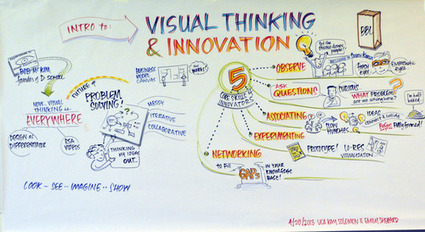Learning how to ask good questions is a cornerstone of learning and living. It’s a practice we use every day. So much of our success in life depends on asking the right questions. So how do we actually do it? It’s easy when you have a solid process.
When we ask good questions in education, the benefits are immeasurable. It lets us clearly define problems and expectations. Students’ research becomes more productive. They have better team communication. It lets them view challenges proactively. It encourages deeper reflection and better learning processes.
Via John Evans, Jim Lerman



 Your new post is loading...
Your new post is loading...

![Use These 5 Steps to Learn How to Ask Good Questions [Infographic] | Daily Magazine | Scoop.it](https://img.scoop.it/9Ig5e-RUbd2Bd5JiwjpP7Tl72eJkfbmt4t8yenImKBVvK0kTmF0xjctABnaLJIm9)







